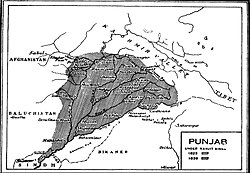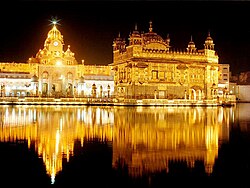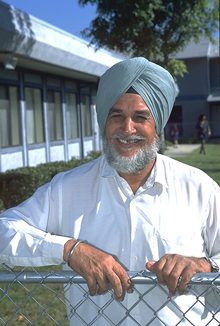| Part of a series on |
| Sikhism |
|---|
 |
The following outline is provides an overview of Sikhism, or Sikhi (its endonym).
Contents
- Scripture and literature
- Scripture
- Sikh literature
- Associated terms
- Philosophy and beliefs
- Relation to other religions
- Practices and culture
- Sikh ceremonies
- Sikh festivals
- General Sikh culture
- Sikh geography
- Sikhism by country
- Gurdwaras
- Other Sikh institutions
- Sikh politics, military, and administration
- Organizations
- Military
- Movements
- History of Sikhism
- Battles
- People
- Titles and labels
- Sikh Gurus
- Notable people
- General concepts
- Pop culture
- See also
- References
- External links
Sikhism has been described as being either a panentheistic or monotheistic religion—emphasizing universal selflessness and brotherhood—founded in the 15th century upon the teachings of Guru Nanak and the ten succeeding Gurus. [1] [2] [3] It is the fifth-largest organized religion in the world, [4] and one of the fastest-growing. [5]
The sacred text and last Guru of Sikhism, Guru Granth Sahib , teaches humans how to unite with the all cosmic soul; with God, the creator: "Only those who selflessly love everyone, they alone shall find God."







